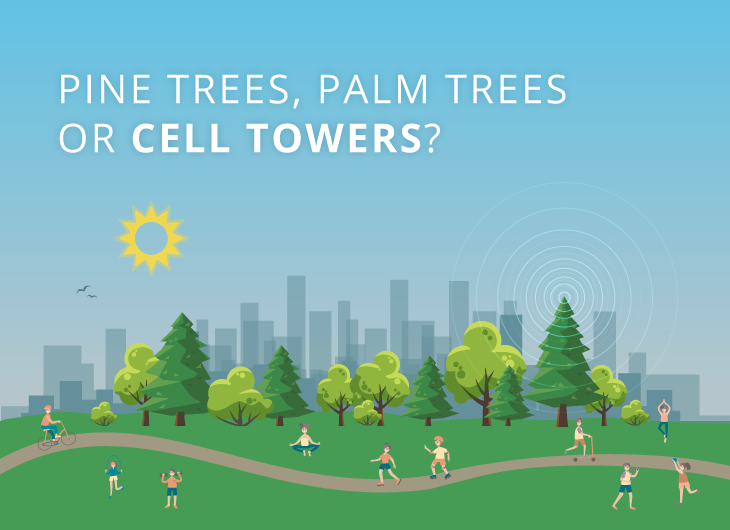Pine Trees, Palm Trees or Cell Towers?
Have you ever noticed an obviously out-of-place palm tree or pine tree in your hometown or another town? The tree was likely taller than the rest and clearly fake. If you guessed this “palm tree” was some sort of cell tower, you are correct! These strange looking “trees” are called concealed cell towers. Depending on where you live, you may see these towers disguised as pine trees, cacti, flag poles, church steeples and more.
But why are some cell towers concealed, while others aren’t? Concealed towers are primarily used to maintain aesthetics in certain areas, such as historical districts. While they don’t always blend in flawlessly with their surroundings, in the right environment, concealed cell towers impact a landscape’s aesthetics much less than a traditional cell tower.
Concealed cell towers have been around for over 25 years. As cell towers became more and more prevalent, especially in urban areas, municipalities wanted towers that would blend in better with their district. In 1992, Larson Camouflage, LLC became the first company to design a monopine, a cell tower disguised as a pine tree. They installed the monopine in Denver, CO. Today, Larson is still a leader in cell tower concealment.
By blending in with their surroundings, concealed cell towers help preserve the natural beauty of iconic landscapes, such as the national parks. This year, the National Park Service approved the addition of the first monopine cell tower in Sequoia National Park. This new tower will increase cell coverage in parts of the park, and it will maintain a more natural look than a typical cell tower would. This step could pave the way for concealed cell towers in other National Parks, such as saguaro cell towers in Saguaro National Park.
As technology continues to evolve and wireless connections become faster and more vital to everyday life, concealed cell towers provide a way to prevent our cities and parks from being overly-saturated with the unsightly appearance of traditional cell towers.


